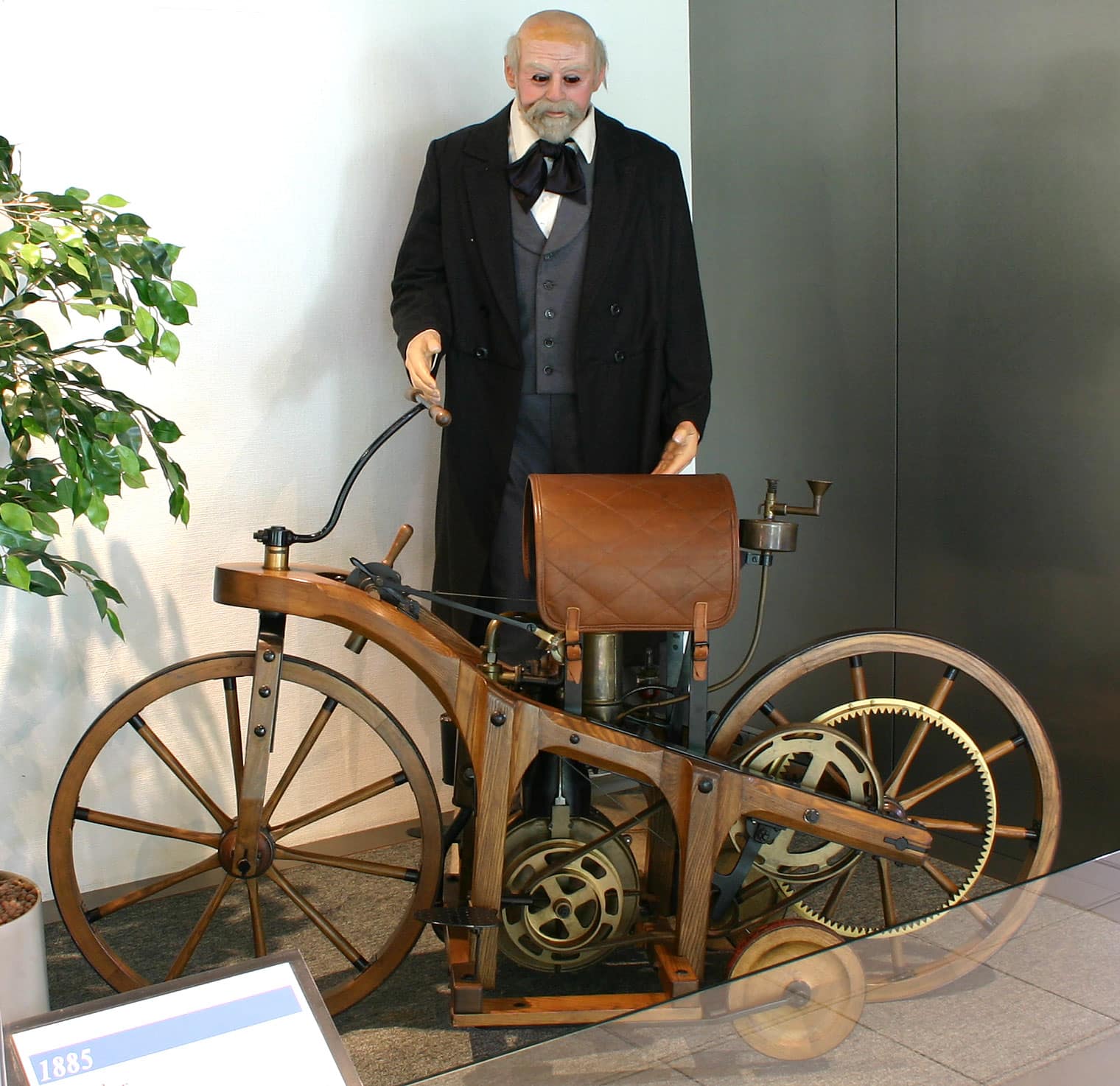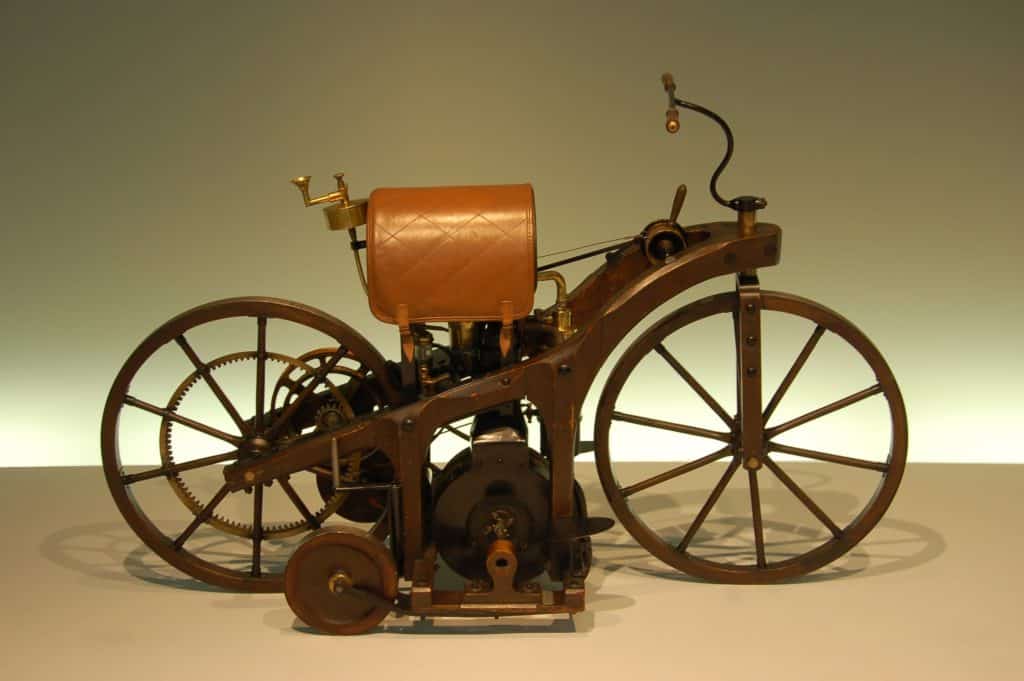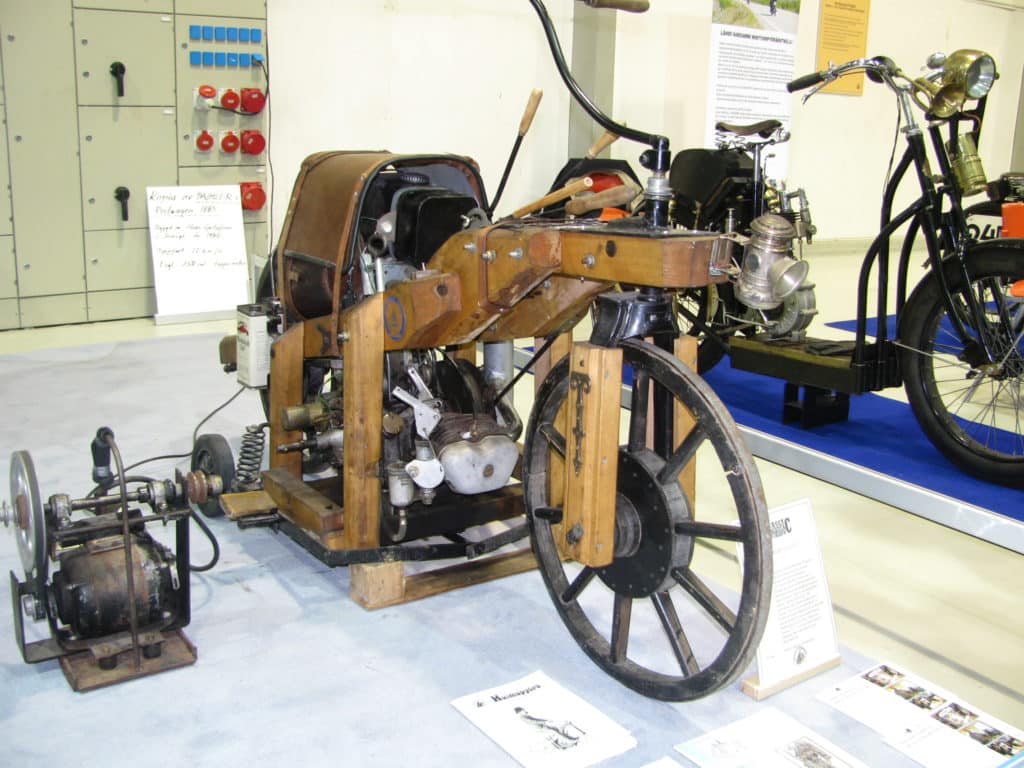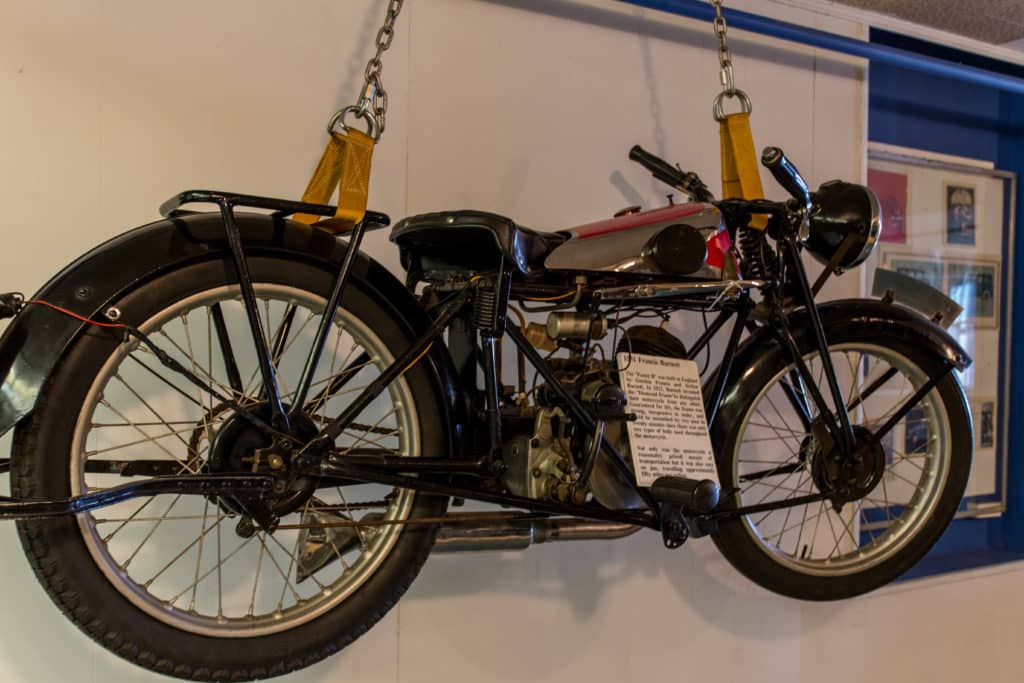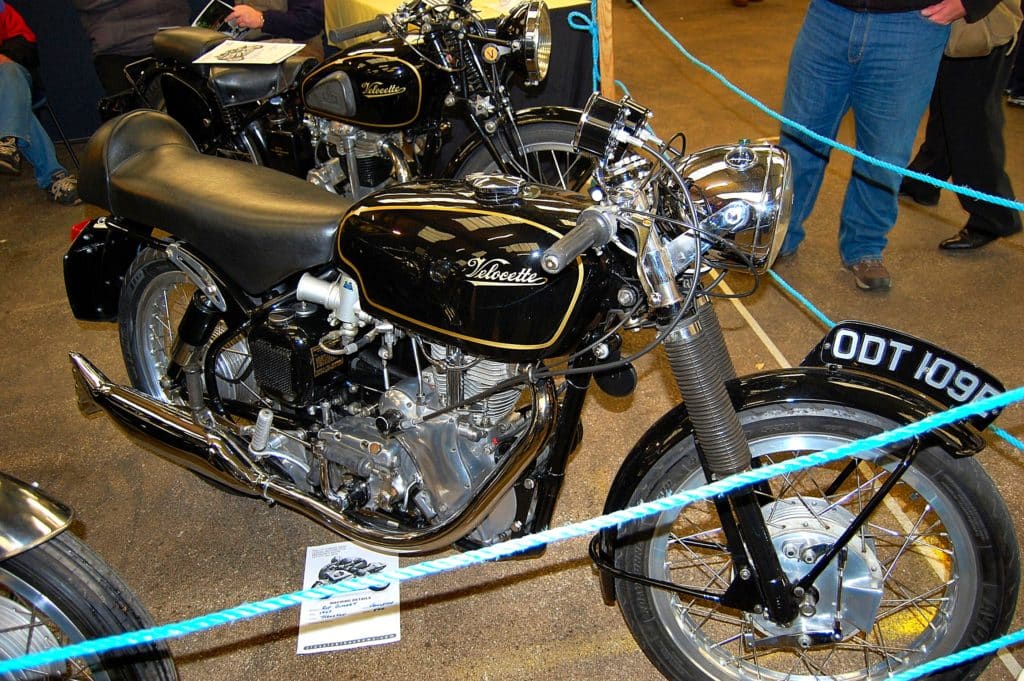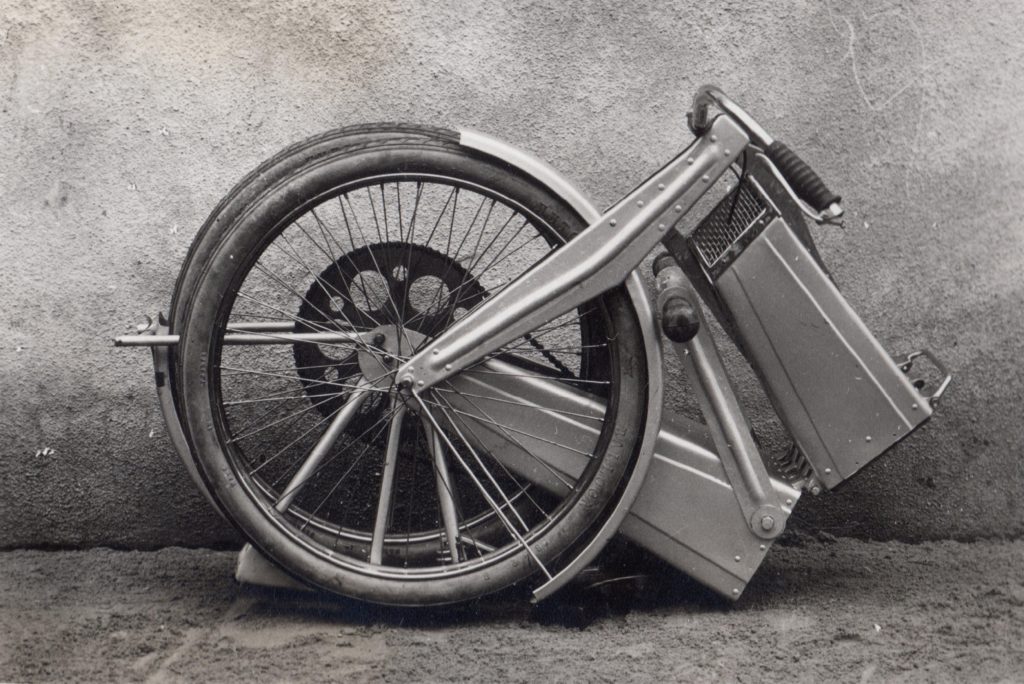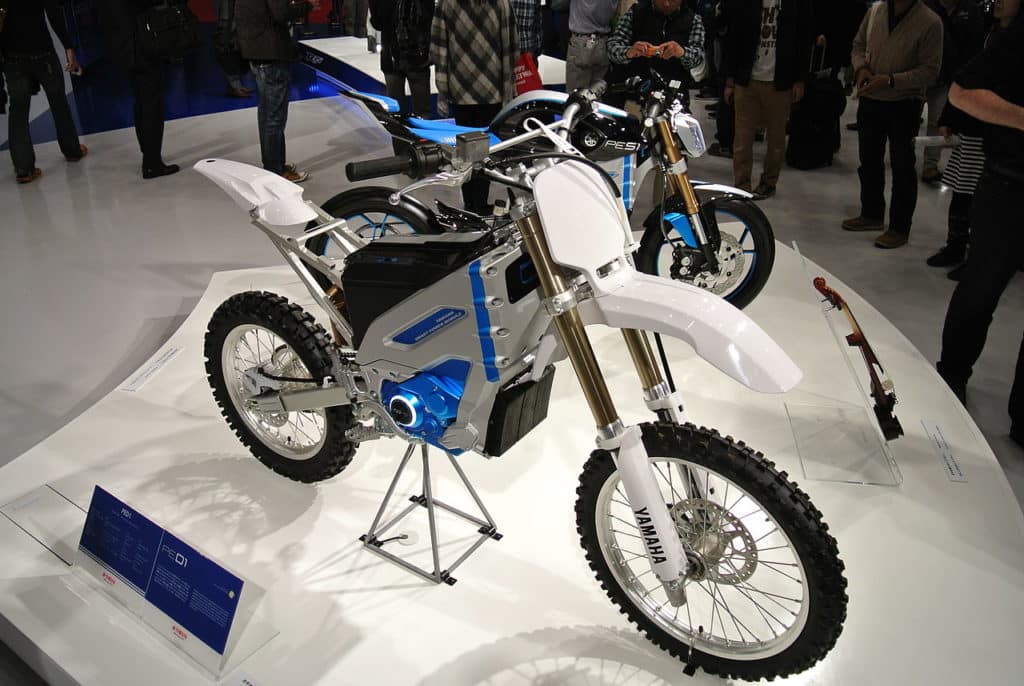When Motorcycle Invented? Introduction
When Motorcycle Invented? The history of motorcycles is a fascinating journey that dates back to the second half of the 19th century. Descended from the safety bicycle, motorcycles have evolved over the years to become the beloved vehicles we know today. Understanding the origins and changes motorcycles have undergone is essential for every enthusiast.
Overview of the historical timeline of motorcycle invention
- The motorcycle traces its roots to the safety bicycle, which featured a front and rear wheel of the same size, introduced in the late 1800s.
- In 1885, Gottlieb Daimler, a German engineer, built the first gasoline-powered motorcycle. It was a wooden-framed vehicle with a single-cylinder engine.
- In 1901, Indian Motorcycle Company became one of the first American motorcycle manufacturers, and by the early 1900s, motorcycles started gaining popularity as an alternative mode of transportation.
- The First World War played a significant role in boosting motorcycle production, as they became crucial for military operations.
- The 1920s witnessed a surge in motorcycle sales, with companies like Harley-Davidson and Indian dominating the market.
- The post-World War II era brought about technological advancements, with motorcycles becoming faster, more powerful, and more comfortable to ride.
- The 1970s and 1980s saw the rise of Japanese motorcycle manufacturers, such as Honda, Kawasaki, Suzuki, and Yamaha, who introduced innovative designs and technologies.
- In recent years, electric motorcycles have gained traction as an eco-friendly and efficient option.
Importance of understanding the origins of motorcycles
- Understanding the history of motorcycles allows enthusiasts to appreciate the evolution of the vehicle and its impact on transportation and culture.
- It provides insight into the technological advancements that have shaped motorcycles, making them safer, more reliable, and more enjoyable to ride.
- Knowledge of motorcycle history enhances the riding experience by fostering a deeper connection and appreciation for the machine itself.
- Awareness of the origins of motorcycles promotes a sense of community among riders, as they share a common passion for the rich heritage of motorcycling.
By exploring the historical timeline of motorcycle invention, we can gain a deeper understanding of how this beloved vehicle has evolved and appreciate the impact it has had on society and culture. So the next time you hop on your motorcycle, take a moment to reflect on its humble beginnings and the journey it has traversed throughout the years.
When Motorcycle Invented? Predecessors of the Motorcycle
The safety bicycle and its influence on motorcycle development
The safety bicycle, introduced in the late 1800s, served as the foundation for the development of motorcycles. This bicycle featured a front and rear wheel of the same size, providing better stability compared to earlier models. The safety bicycle’s design paved the way for the addition of a motorized engine, leading to the birth of the motorcycle.
Key features of the safety bicycle
– Equal-sized wheels: Unlike previous bicycles with larger front wheels, the safety bicycle had two wheels of the same size, providing better balance and control.- Chain-driven mechanism: The safety bicycle introduced a chain-driven mechanism that allowed riders to transfer power from the pedals to the rear wheel efficiently.- Pneumatic tires: The adoption of pneumatic tires provided a smoother and more comfortable ride, enhancing the overall riding experience.- Increased safety measures: The safety bicycle featured improved braking systems, making it safer than its predecessors.- Lightweight frame: The use of lighter materials, such as steel and aluminum, made the safety bicycle easier to maneuver and accelerated its adoption.
These key features of the safety bicycle laid the groundwork for the incorporation of engines and the evolution of motorcycles in the coming years.
With the knowledge of the safety bicycle’s impact on motorcycle development, we can appreciate how this innovative design influenced the birth of motorcycles and contributed to their evolution. The safety bicycle’s features, such as equal-sized wheels, chain-driven mechanisms, and advanced safety measures, set the stage for the development of faster, more efficient, and safer motorcycles we know today.
The Early Years (Late 19th Century)
The Daimler Reitwagen: the first true motorcycle
In 1885, German auto pioneer Carl Benz added an internal combustion engine to a bicycle frame, creating what is widely considered the world’s first true motorcycle, the Daimler Reitwagen. This invention marked the beginning of a new era in motorcycle history and revolutionized the concept of mobility on two wheels.
Important inventions and innovations during this period
During the late 19th century, several key inventions and innovations contributed to the development of motorcycles:
- Improved engine technology: The development of lightweight, compact engines allowed for easier integration into bicycles, making motorcycles more practical and efficient.
- Suspension systems: The introduction of suspension systems, such as the telescopic fork, improved the motorcycle’s handling and comfort on rough terrain.
- Multipurpose tires: Tires specifically designed for motorcycles were developed, providing better traction and stability on various surfaces.
- Electric ignition: The adoption of electric ignition systems replaced the cumbersome and unreliable methods used in earlier models, improving starting reliability.
- Gear transmission: The introduction of gear transmission systems allowed riders to shift between different gear ratios, enhancing the motorcycle’s performance and versatility.
These inventions and innovations paved the way for significant advancements in motorcycle technology and performance. As motorcycle manufacturers began to refine and perfect these early designs, motorcycles became more accessible and popular among the general public.
With the Daimler Reitwagen as a starting point and the continuous development of technology and engineering, motorcycles would undergo significant transformations in the years to come, ultimately leading to the diverse range of motorcycles we have today.
The Rise of Motorcycle Companies (Early 20th Century)
The establishment of motorcycle manufacturing companies
During the 1920s and 1930s, the motorcycle industry experienced significant growth and saw the emergence of well-known companies entering the market. Moto Guzzi and BMW were among the manufacturers that became key players in the industry during this time. Additionally, the American Motorcyclist Association was established, further solidifying the popularity and importance of motorcycles.
In 1894, a German company called Hildebrand & Wolfmuller became the first to create a factory production line for motorcycles. This marked a significant milestone in the industry’s history and paved the way for the mass production of these vehicles.
Contributions of companies like Harley-Davidson and Indian Motorcycle
By 1931, Harley-Davidson and Indian Motorcycle were the only two American manufacturers producing commercial motorcycles, establishing a notable rivalry in the United States. Both companies played a crucial role in shaping and advancing the motorcycle industry.
Harley-Davidson, founded in 1903, quickly gained popularity for its iconic motorcycles and innovative designs. The company’s commitment to quality and performance helped establish it as one of the most recognized motorcycle brands worldwide.
Indian Motorcycle, founded in 1901, was known for its powerful and reliable motorcycles. The company introduced many technological advancements, such as the shaft drive system in 1923, which improved performance and durability.
The contributions of these companies, along with other manufacturers of the time, propelled the motorcycle industry forward. Their innovations, competition, and growing consumer demand led to the continuous evolution of motorcycles and laid the foundation for the diverse range of motorcycles we have today.
As the motorcycle industry continued to thrive in the early 20th century, more companies joined the market, contributing to its growth and development. This period marked a significant turning point in the history of motorcycles, setting the stage for future advancements and innovations to come.
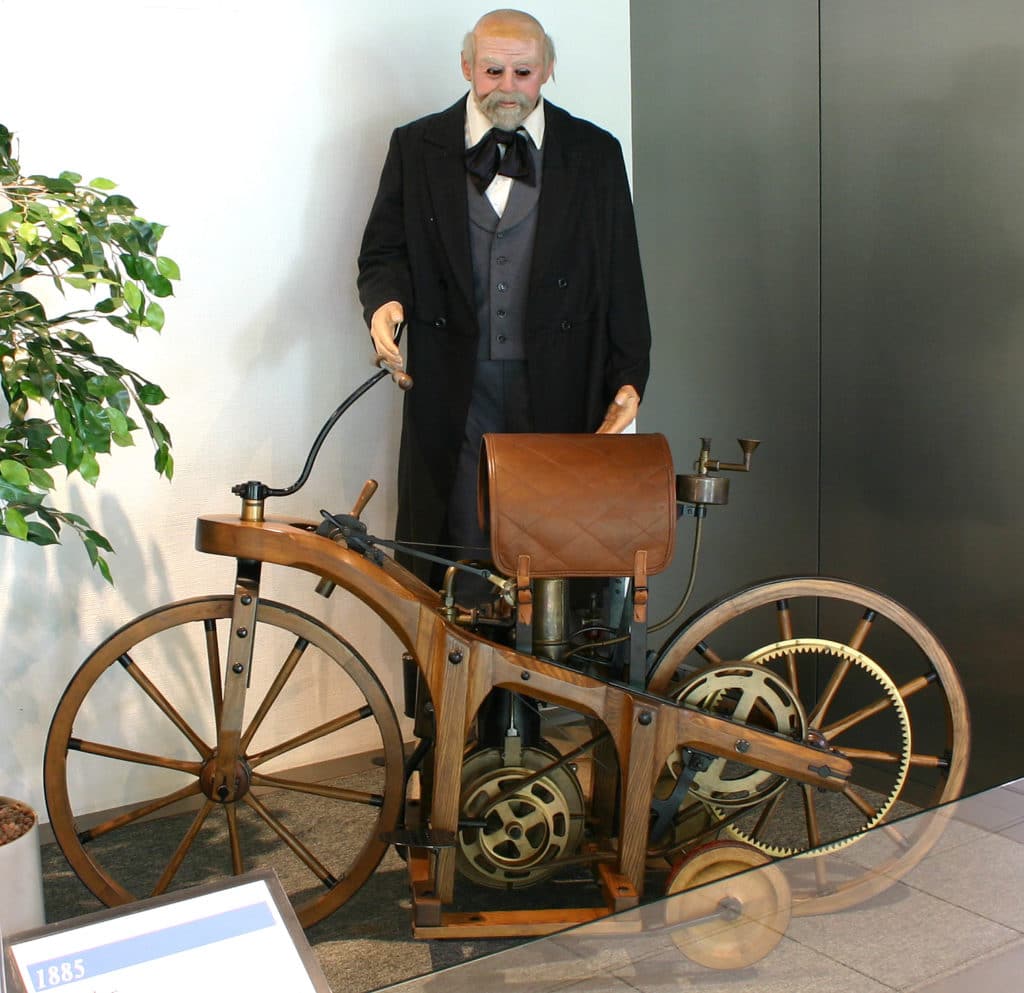
World War I and Motorcycles
Motorcycles’ crucial role in World War I
During World War I, motorcycles played a crucial role in military operations. Their versatility and maneuverability made them ideal for various tasks on the frontlines. Motorcycles were used for reconnaissance, delivering messages and orders, transporting supplies, and even evacuating wounded soldiers. They revolutionized how people operated and communicated during the war, making a significant impact on battlefield strategies.
Military advancements and modifications made to motorcycles
During World War I, motorcycles underwent significant advancements and modifications to meet the demands of the war. These developments improved their reliability and performance in challenging conditions.
- Improved Suspension: In order to navigate rough terrains and battlefield obstacles, motorcycles incorporated improved suspension systems to provide a smoother and more controlled ride.
- Increased Engine Power: To handle the demands of carrying heavier loads and traversing difficult terrains, engines were upgraded to provide more power and torque.
- Sturdier Construction: Motorcycles were reinforced and made more robust to withstand the rigors of war. This included stronger frames, reinforced rims, and durable bodywork.
- Storage Carriers: Specialized carriers were added to motorcycles to transport equipment and supplies more efficiently.
- Traction Enhancement: Tires were modified with better tread patterns to improve traction on various surfaces, including muddy fields and slippery roads.
These military advancements and modifications not only improved the performance of motorcycles on the battlefield but also contributed to the overall development of motorcycle technology. After the war, many of these enhancements and innovations found their way to civilian models, further advancing the industry’s growth and evolution.
Overall, World War I played a significant role in showcasing the importance and capabilities of motorcycles in military operations. The war acted as a catalyst for technological advancements, leading to the rise of motorcycle manufacturing companies and setting the stage for further growth and innovation in the industry.
The Post-War Boom (1920s-1950s)
Increased popularity of motorcycles among civilians
After World War I, motorcycles gained immense popularity among civilians. Returning soldiers who had experienced the versatility and thrill of motorcycles during the war brought back their love for these two-wheeled vehicles. This led to a surge in demand and the emergence of a thriving motorcycle culture. Motorcycles became a symbol of freedom and adventure, attracting enthusiasts from all walks of life.
Introduction of new models and features
During this period, motorcycle manufacturers introduced new models with improved features and performance. The roaring twenties saw the production of more powerful and stylish motorcycles, catering to the growing demand. Manufacturers such as Harley-Davidson, Indian, and Triumph became household names, known for their iconic designs and impressive performance.
Motorcycle technology continued to evolve, with advancements made in both design and engineering. Innovations like electric starters, front and rear suspension systems, and enclosed chain drives greatly enhanced the riding experience. Motorcycles became more comfortable and easier to handle, appealing to a wider audience.
The motorcycle industry also witnessed the entry of new players, such as Suzuki, Kawasaki, and Yamaha, starting in the 1950s. These companies brought their own unique styles and innovations, contributing to the diversity of motorcycles available in the market.
The post-war boom era saw motorcycles becoming increasingly popular as a mode of transportation, leisure, and even sport. Motorcycle clubs and racing events gained prominence, further fueling the enthusiasm among riders.
Overall, the period from the 1920s to the 1950s marked a significant phase in the history of motorcycles. The increased popularity among civilians, the introduction of new models and features, and the continued growth of the industry set the stage for the motorcycle’s future as a symbol of freedom and an embodiment of mechanical innovation.
Motorcycle Technologies and Advancements (1960s-1990s)
The development of key technologies in the motorcycle industry
The period from the 1960s to the 1990s witnessed significant advancements in motorcycle technologies. These advancements revolutionized the industry and set the stage for the modern motorcycles we see today. Some key developments during this period include:
- Rapid improvement in engine performance: Manufacturers focused on developing more powerful engines, resulting in increased speed and acceleration. This was achieved through advancements in fuel injection systems, improved carburetors, and the introduction of four-stroke engines.
- Enhancements in braking systems: The adoption of disc brakes significantly improved the braking capabilities of motorcycles. Disc brakes provided better stopping power and greater control, enhancing safety for riders.
- Introduction of electronic ignition systems: Traditional contact breaker points were replaced by electronic ignition systems, leading to more reliable ignition and smoother engine performance.
- Advancements in frame design: Manufacturers experimented with new frame materials and designs to improve stability and handling. Lightweight frames made of materials like aluminum and composite materials became popular, offering improved maneuverability for riders.
- Innovations in tire technology: The development of new tire compounds and tread patterns improved grip and traction, enhancing overall performance and safety.
Advancements in engine design, suspension systems, and safety features
During this period, significant advancements were made in various aspects of motorcycle design, including:
- Engine design: Motorcycle engines became more efficient and compact. The introduction of overhead camshaft technology and the use of multiple valves per cylinder increased power output and improved fuel efficiency.
- Suspension systems: Motorcycle suspension systems were refined to provide better ride comfort and handling. The use of telescopic forks in the front and rear suspension systems with adjustable dampening became commonplace, allowing riders to fine-tune their suspension settings.
- Safety features: Manufacturers focused on improving rider safety by introducing features such as improved lighting systems, brighter and more effective headlights, and the adoption of ABS (Anti-lock Braking System) technology for better control during braking.
These advancements in engine design, suspension systems, and safety features greatly enhanced the performance, handling, and safety of motorcycles during the 1960s-1990s. They laid the foundation for the modern motorcycles we ride today, showcasing the industry’s commitment to continuous innovation and improvement.
Modern Motorcycles (2000s-Present)
Trends and innovations in the current motorcycle market
The 21st century has brought about numerous advancements in the motorcycle industry, both in terms of technology and design. Here are some key trends and innovations that have emerged in the current motorcycle market:
- Advanced electronics and connectivity: Modern motorcycles are equipped with sophisticated electronics that enhance the riding experience. Features such as ride modes, traction control, and cornering ABS provide riders with greater control and safety. Additionally, many motorcycles now come with built-in GPS navigation systems and Bluetooth connectivity, allowing riders to easily access information and communicate on the go.
- Integration of advanced materials: Manufacturers have embraced the use of advanced materials such as carbon fiber and titanium, resulting in lighter and more agile motorcycles. These materials offer improved performance, durability, and fuel efficiency.
- Adoption of fuel-efficient technologies: With growing concerns for environmental sustainability, motorcycle manufacturers have been developing and promoting fuel-efficient technologies. This includes the introduction of hybrid and electric motorcycles that offer reduced emissions and lower operating costs.
- Incorporation of smart features: Motorcycles now come equipped with various smart features, including keyless ignition, smartphone integration, and even adaptive cruise control. These features enhance convenience and make the riding experience more enjoyable.
- Customization options: The customization trend has gained immense popularity in recent years. Manufacturers are offering a wide range of customization options, allowing riders to personalize their motorcycles according to their preferences and style.
Electric motorcycles and other environmentally friendly options
One of the most significant developments in the motorcycle industry is the rise of electric motorcycles. With advancements in battery technology, electric motorcycles are becoming increasingly viable alternatives to traditional combustion engines. They offer clean and quiet operation, lower maintenance costs, and instant torque.
Alongside electric motorcycles, there has been a surge in the availability of other environmentally friendly options. These include hybrid motorcycles that combine electric and combustion engines, as well as motorcycles fueled by alternative fuels such as bioethanol or hydrogen.
As environmental awareness continues to grow, we can expect further innovations in the realm of sustainable motorcycles. These advancements will not only reduce emissions but also contribute to a cleaner and greener future for the motorcycle industry.
In conclusion, modern motorcycles have seen significant advancements and innovations in the 2000s and beyond. From advanced electronics to eco-friendly options, the industry continues to evolve to meet the demands of riders and global sustainability goals. The future of motorcycles holds exciting prospects, promising even greater performance, connectivity, and environmental friendliness.
Conclusion
In conclusion, the motorcycle industry has witnessed significant advancements and innovations in the 2000s and beyond. From advanced electronics to eco-friendly options, motorcycles have evolved to cater to the demands of riders and global sustainability goals. The introduction of advanced electronics and connectivity features has enhanced the riding experience, providing riders with greater control and safety. The integration of advanced materials such as carbon fiber and titanium has resulted in lighter and more agile motorcycles, offering improved performance and fuel efficiency. Moreover, the adoption of fuel-efficient technologies, including hybrid and electric motorcycles, has addressed concerns for environmental sustainability by reducing emissions and operating costs. Additionally, the incorporation of smart features has made motorcycles more convenient and enjoyable, with options like keyless ignition, smartphone integration, and adaptive cruise control. The customization trend has also grown in popularity, allowing riders to personalize their motorcycles according to their preferences and style.
One of the most significant developments in the motorcycle industry is the rise of electric motorcycles. With advancements in battery technology, electric motorcycles are becoming increasingly viable alternatives to traditional combustion engines. Alongside electric motorcycles, there has been a surge in the availability of other environmentally friendly options, such as hybrid motorcycles and those fueled by alternative fuels like bioethanol or hydrogen. These options offer clean and quiet operation, lower maintenance costs, and instant torque. As environmental awareness continues to grow, further innovations in sustainable motorcycles can be expected, contributing to a cleaner and greener future for the industry.
Summary of the historical timeline of motorcycle invention
The journey of the motorcycle spans over 100 years, starting with the creation of the Traub motorcycle in 1916 by a mysterious inventor. Since then, the motorcycle industry has witnessed significant milestones and innovations. From the early designs and advancements in engine technology to the introduction of iconic brands and models, motorcycles have evolved to become the beloved machines we know today. The timeline showcases the continuous progress and innovation that has shaped the motorcycle industry.
Appreciation for the impact motorcycles have had on transportation and leisure
The motorcycle has not only revolutionized transportation but has also played a significant role in leisure activities and culture. Motorcycles have offered a sense of freedom, adventure, and individuality to riders around the world. They have become symbols of rebellion, self-expression, and camaraderie, attracting enthusiasts from all walks of life. The motorcycle lifestyle has grown into a community that celebrates the thrill of the open road and fosters a strong sense of belonging. It is a testament to the lasting impact motorcycles have had on society.
In conclusion, the history of the motorcycle is a fascinating story of innovation and evolution. From its humble beginnings to the technologically advanced machines of today, motorcycles continue to captivate and inspire riders worldwide. Whether you ride for pleasure, commuting, or competition, the motorcycle remains a timeless symbol of freedom and excitement on two wheels.
FAQ: Tracing the Historical Timeline of Motorcycle Invention
Q: When was the motorcycle invented?
A: The motorcycle was invented in the late 19th century.
Q: Who invented the motorcycle?
A: The invention of the motorcycle was a collaborative effort, with several inventors contributing to its development. However, Gottlieb Daimler and Wilhelm Maybach are often credited with building the first motorcycle in 1885.
Q: How did the motorcycle evolve over time?
A: The motorcycle underwent significant evolution since its invention. Early models were essentially bicycles with added engines, but over time, advancements in technology led to the development of more powerful engines, better suspension systems, and streamlined designs. Today, motorcycles come in various styles, including sports bikes, cruisers, and off-road models.
Q: When did motorcycles become popular?
A: Motorcycles gained popularity in the early 20th century, particularly after the First World War. They offered a convenient mode of transportation and were embraced by riders looking for a thrilling and adventurous experience.
Q: What were some important milestones in motorcycle history?
A: Several milestones mark the development of motorcycles throughout history. Here are a few notable examples:
- 1869: The first steam-powered motorcycle was built by Sylvester Roper.
- 1885: Daimler and Maybach built a gasoline-powered motorcycle, considered the first true motorcycle.
- 1903: The Indian Motorcycle Company was founded.
- 1909: Harley-Davidson introduced their first V-twin engine.
- 1955: The Honda Super Cub, one of the most successful motorcycles in history, was launched.
Q: Were motorcycles used in wars?
A: Yes, motorcycles played a significant role in various wars. During WWII, motorcycles were utilized for reconnaissance, dispatch, and as combat vehicles in some cases. They provided maneuverability and quick transportation across different terrains.
Q: Are motorcycles still popular today?
A: Absolutely! Motorcycles continue to be popular worldwide. They are admired for their agility, speed, and the sense of freedom they offer. Motorcycling is not only a mode of transportation but also a recreational activity and a passionate lifestyle for many enthusiasts.
Q: What are some famous motorcycle brands?
A: There are numerous popular motorcycle brands, each with their own unique history and reputation. Some well-known brands include Harley-Davidson, Honda, Yamaha, Suzuki, Kawasaki, Ducati, BMW, and Triumph.
Q: How has motorcycle design evolved over time?
A: Motorcycle design has evolved significantly throughout history. Early motorcycles had an exposed engine, bicycle-like frames, and minimal suspension. Today’s motorcycles feature sleek aerodynamic designs, advanced suspension systems, and cutting-edge technology, making them more comfortable, efficient, and visually appealing.
Q: What is the future of motorcycles?
A: The future of motorcycles looks promising. With advancements in electric vehicle technology, we are witnessing the emergence of electric motorcycles that offer eco-friendly and efficient alternatives to traditional gasoline-powered models. Additionally, advancements in connectivity, safety features, and autonomous technology are likely to shape the future of the motorcycle industry.

David Williams is an author with a passion for motorcycles and all things related to the world of two-wheeled vehicles. His expertise is evident on his website, The Moto Expert, where he shares his knowledge and insights with fellow enthusiasts. Follow him on social media to stay up-to-date on the latest motorcycle news, reviews, and trends. Whether you’re a seasoned rider or just starting out, David’s content is sure to inform and entertain. Join his community and become a part of the conversation today.

